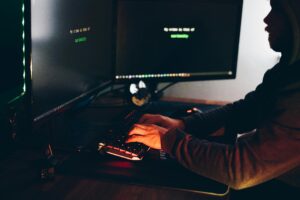Cyberattackers Unleash Flood of Potentially Disruptive Election-Related Activity

source: darkreading.com | image: pexels.com
Cyber-threat actors have ramped up their targeting of the 2024 US electionswith a flood of malicious activity expected to peak over the next month, aimed at causing disruption to voters and the election process and requiring increased vigilance on the part of stakeholders.
Specifically, attackers have bolstered election-related threat activity since the beginning of the year with an increase in the sale of phishing kits targeting US voters and campaign donors; the registration of more than 1,000 domains aimed at exploiting election-related content for malicious purposes; and increased ransomware activity targeting government entities, according to research from FortiGuard Labs Threat Research released today.
Since the inception of Internet-related threats, cyber-threat actors have typically increased malicious activity ahead of elections, notes Derek Manky, chief security strategist and vice president of global threat intelligence at Fortinet. However, they aim to be especially disruptive during the current election cycle, requiring that all stakeholders be prepared to fend off malicious actors in the upcoming weeks to protect election outcomes.
“As the 2024 US presidential election approaches, it’s critical to recognize and understand the cyber threats that may impact the integrity and trustworthiness of the election process and the welfare of the participating citizens,” he says.
Indeed, separate research has found that adversaries from Russia, China, and Iran in particular have been using cyber operations to stoke discord and influence election outcomes rather than make direct attacks on voting machines or other voter infrastructure. These more insidious tactics require a different type of vigilance on the part of defenders, the researchers noted.
Specific Threats to Watch For
FortiGuard Labs’ latest election-threat research is the result of analysis of threats gathered from January 2024 to August 2024 that may affect US-based entities and the electoral process. The researchers discovered several key areas of threat activity that have been on the rise.
One is a significant increase in the availability of affordable phishing kits on the Dark Web designed to target voters and donors by impersonating the presidential candidates and their campaigns. Specifically, the researchers found kits for $1,260 created to impersonate US presidential candidates and to harvest personal information, including names, addresses, and credit card details.
Part of the phishing activity around the current election cycle also includes an increase of highly convincing mobile scams that use phone calls, voicemails, or messaging services that leverage deepfake technology to spread misinformation, which can affect voter outcomes, notes Alex Quilici, CEO at YouMail.
“AI can now create highly convincing voice attacks that make it sound like a trusted figure, such as a candidate, urging you not to vote or spreading false information,” he says. “This kind of deception can seriously undermine public trust and disrupt the electoral process.”
Attackers also have registered more than 1,000 new potentially malicious domains since the beginning of 2024 that incorporate election-related content and candidates to lure unsuspecting targets and potentially conduct nefarious activities, the researchers noted. The two most-used hosting providers for these election-themed websites are AMAZON-02 and CLOUDFLARENET, demonstrating that attackers are leveraging known, reputable services to bolster the legitimacy of malicious domains.
Another way cyberattackers can spread misinformation and disrupt the democratic process is through the use of people’s personal information to directly target them, the researchers noted. Fortinet found that there currently is an abundance of this type of material on the Dark Web, with more than 1.3 billion rows of combo lists — which include usernames, email addresses, and passwords — of US citizens for sale for nefarious use.
The availability of this data poses a considerable risk for credential-stuffing attacks that allow cybercriminals to gain unauthorized access to people’s accounts. Overall, the availability of so much personal data of various election stakeholders creates potential indirect disruption in the voting process, notes Casey Ellis, founder and chief strategy officer at Bugcrowd.
“While it may be difficult to use these records to commit the kind of fraud or attacks that would directly modify the outcome of an election, it’s certainly a cheap and simple exercise to simply highlight the possibility of their use as a way to instill distrust in the democratic process, and to potential affect and manipulate voter turnout,” he says.
FortiGuard Labs researchers also noted a 28% increase in ransomware attacks against the US government year-over-year based on observed leak sites. This type of activity also can threaten the integrity of the election process by undermining citizens’ trust in the ability of the government to protect the personal data they collect from them.
Protect Election Integrity
To ensure the US presidential election process runs smoothly for all that wish to participate, Fortinet offered some recommendations to prevent and mitigate attacks between now and election day. The researchers advised that individuals and organizations alike always remain vigilant for suspicious behavior or activity leading up to major election-related events and prioritize good cyber hygiene in general to reduce potential threats.
Organizations, especially those related to the election or government agencies, should prioritize employee training and awareness about the cyber threats that exist that aim to disrupt the election process. Enforcing multifactor authentication and a strong password policy across both individuals’ and organizations’ online accounts also can protect against intrusion.
Finally, any organization with a stake in the election also should install endpoint protection solutions, patch operating systems and Web servers, and update software regularly to ensure systems are as secure as possible, Fortinet recommended.
